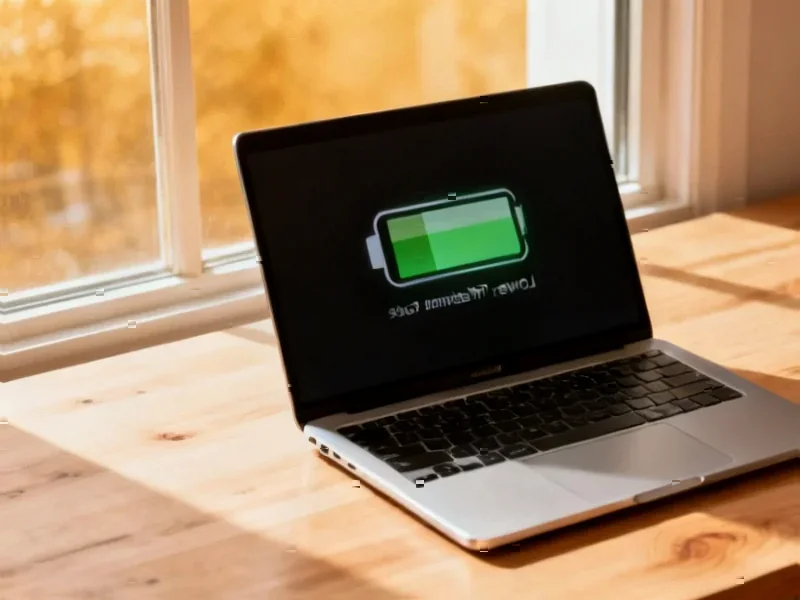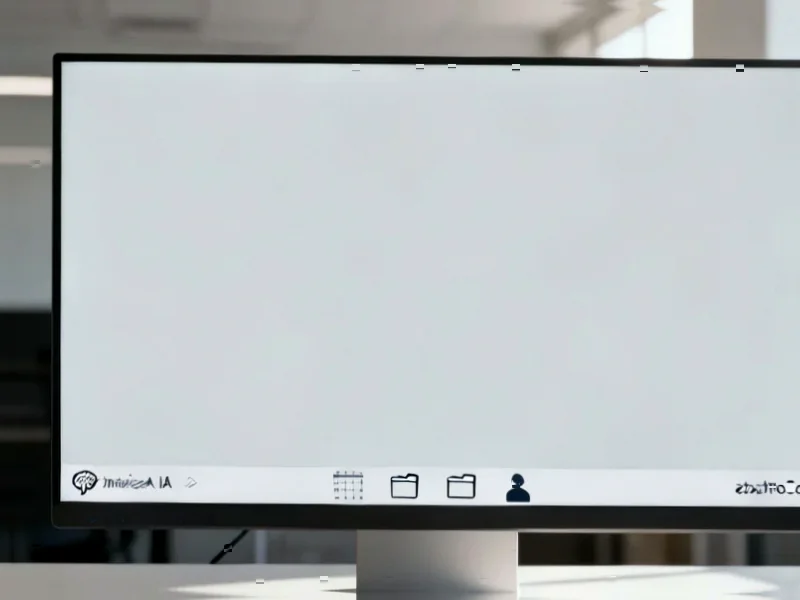According to 9to5Mac, Apple is actively developing a cheaper MacBook that will use an iPhone processor instead of the usual M-series chips. The device, code-named J700, is currently in testing and early production with overseas suppliers. It’s scheduled to launch in the first half of 2026 at a price well under $1000. The laptop will feature a smaller screen than current MacBooks, coming in slightly below the 13.6-inch MacBook Air display. This follows earlier reports from analyst Ming-Chi Kuo about a MacBook running on an A18 Pro chip. The machine represents Apple’s first consumer Mac to use A-series silicon rather than M-series processors.
A major pricing strategy shift
Here’s the thing – Apple doesn’t really do “cheap” through its own channels. The company maintains strict pricing control, and you’ll never find brand new hardware discounted at Apple Stores. The only exceptions are refurbished models or those exclusive retail partnerships like the M1 MacBook Air at Walmart for $649. So if Apple actually sells this sub-$1000 MacBook through its own website and stores, that’s a huge departure from their usual playbook.
And frankly, it’s about time. Look at the current MacBook lineup – the M4 MacBook Air starts at $999, and while you can sometimes find it for $799 at Amazon, that’s still not exactly budget territory. Meanwhile, Chromebooks and Windows laptops dominate the sub-$800 space, which is where most students and casual users shop. Apple’s been completely absent from that market segment for years.
Why an iPhone chip in a Mac?
This is where it gets really interesting. Apple’s been using M-series chips across all its Macs since the Intel transition, and they’ve even moved iPad Pro and iPad Air to M chips. So why go back to A-series for a MacBook? Basically, cost. A-series chips are cheaper to produce, and they’re already manufactured at massive scale for iPhones. By using existing silicon and pairing it with a lower-end LCD display, Apple can hit that aggressive sub-$1000 price point while still maintaining healthy margins.
But can an iPhone processor really handle MacOS? Well, Apple technically already tested this concept with the Developer Transition Kit that used A-series chips, though that was never sold to consumers. The A18 Pro would likely be plenty powerful for basic computing tasks – web browsing, document editing, media consumption. It’s not meant to compete with M5 MacBook Pros, but rather to serve as an entry point into the Mac ecosystem.
Competing with their own iPad
Mark Gurman frames this as an alternative to the iPad, which makes perfect sense when you think about it. An iPad Pro with Magic Keyboard can easily cost over $1000, putting it in direct competition with MacBooks. So why would someone choose an iPad with keyboard accessory over an actual MacBook? The lines have been blurring for years, and this cheaper MacBook might finally answer that question.
Think about it – if you’re a student or casual user and you can get a real MacBook for less than an iPad Pro setup, which would you choose? For many people, the full desktop operating system and laptop form factor would be more appealing. This could effectively cannibalize iPad sales, but maybe that’s a trade-off Apple is willing to make to gain market share in the budget laptop segment.
The timing is also strategic – by 2026, we’ll be deep into the M5 and M6 era for Apple’s premium devices. Having a clear separation between “pro” M-series MacBooks and “consumer” A-series models helps segment the market without confusing customers. It’s similar to what we see in the iPhone lineup with regular versus Pro models.
What this means for the laptop market
If Apple actually pulls this off, it could seriously disrupt the budget laptop space. Chromebooks and entry-level Windows machines have had this market to themselves for years. But an Apple-branded laptop under $800? That’s going to get attention from parents, students, and casual users who want the Mac experience but couldn’t justify the price.
The bigger question is whether Apple will commit to this strategy long-term. Will we see annual updates to the “A-series MacBook” alongside M-series refreshes? Or is this a one-time experiment? Given that the device is already in active testing with suppliers, it seems like Apple is pretty serious about this direction.
One thing’s for sure – 2026 is shaping up to be an interesting year for Apple’s laptop lineup. Between the expected M5 MacBook Air, potential M6 Pro/Max models, and now this budget A-series option, Apple seems determined to cover every price point and use case. For more Apple insights, check out 9to5Mac on Twitter and their YouTube channel.




